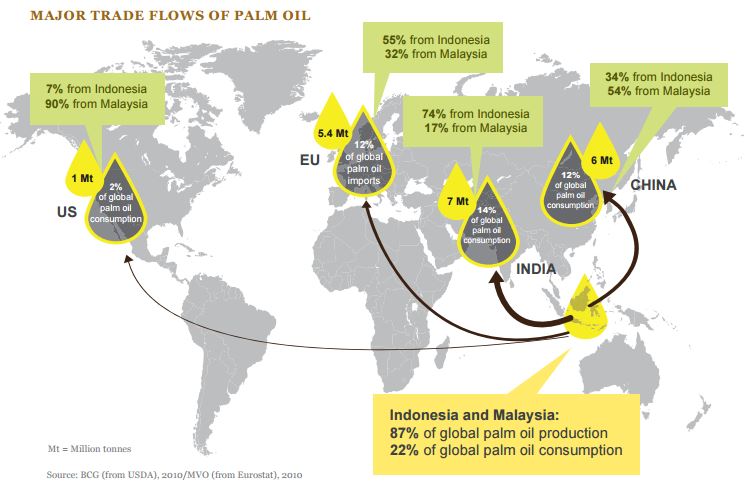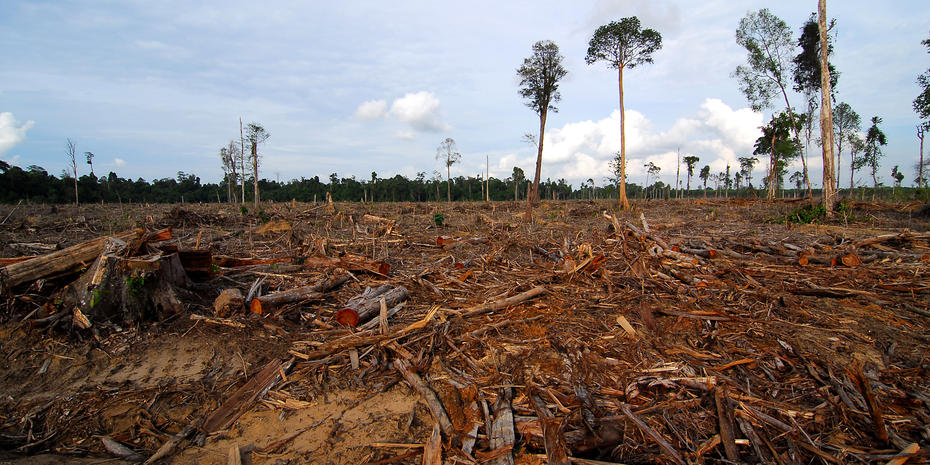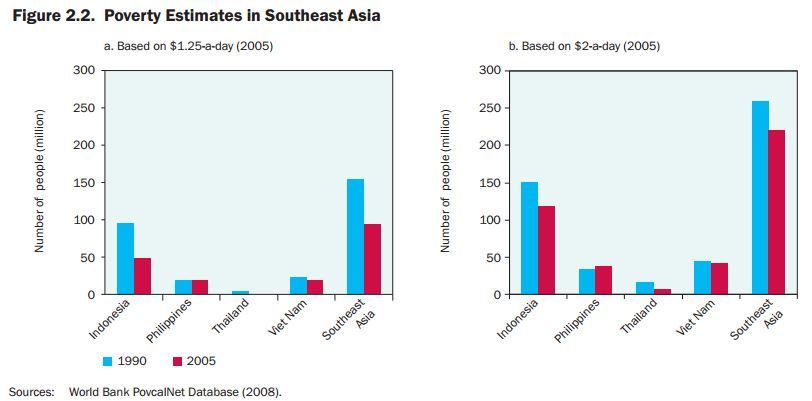Palm oil is one of the most profitable land uses in the tropics. For the main producing countries, palm oil can significantly contribute to national economies, driving rapid economic growth and contributing to the alleviation of rural poverty.
In Indonesia, the average income in a complete financial year of an oil palm plantation is up to $2,500 per hectare, compared to only $250 for a rice plantation. There are an estimated 25 million Indonesians living indirectly from palm oil production.
Nevertheless, unsustainable production also has potentially negative economic consequences at local and global levels in contributing to habitat destruction, pollution and climate change.
Producing countries
- Malaysia exported 16.7 million tonnes of palm oil in 2010, with a value of about US$15 billion, equivalent to over 9% of the country’s total exports.
- Indonesia exported 16.4 million tonnes, with a value of US$14.8 billion, equivalent to over 12% of exports.
- The palm oil industry is a significant contributor to rural income in Indonesia. At a local level, oil palm development has played a significant role in reducing rural poverty and improving infrastructure.
- The industry directly and indirectly provides employment for over 0.8 million people in Malaysia and over 1.7 million in Indonesia.
- In 2008, over 41% of oil palm plantations were owned by small land holders, producing 6.6 million tonnes of palm oil.
- In 1997, the average net income of oil palm smallholders was seven times that of farmers involved in subsistence production of food crops.
Importing countries
- The European Union (EU) imported over 9 million tonnes (€5.4bn) of palm oil and palm kernel meal in 2012.
- These imports led to an indirect contribution to GDP of €2.7bn, an indirect contribution of €1.2bn in tax revenue and indirect contribution to employment of 67,000 jobs (indicating that more than seven workers are employed in the downstream supply chain for every thousand tonnes imported).
- In the United Kingdom alone, palm oil imports created 6,800 jobs and contributed £330 million to GDP and £140 million to tax revenues.

Major trade flows of palm oil by WWF (2011)
Climate change
- The palm oil industry through deforestation contributes to the release of greenhouse gas emissions. Tropical deforestation accounts for about 10% of total global warming emissions, and emissions from oil palm cultivation alone in Indonesia accounted for an estimated 2-9% of all tropical land use emissions from 2000 to 2010.
- Southeast Asia will be seriously affected by the adverse impacts of climate change. Heat stress, drought, climate-associated pests and diseases, flooding, and typhoons will all contribute to the decline in the production of palm oil, threatening local livelihoods tied to agricultural production.
- A study by WRI in Brazil and Guatemala reveals the economic impacts of securing land rights for local people has significant economic benefits in terms of climate change, preventing the release of over 5.4 billion tons of CO2 over 20 years, with the benefits from carbon capture and averted emissions amounting to $161.7 billion over 20 years in Brazil and $605 million in Guatemala’s Maya Biosphere Reserve over the same period.

Deforestation in Malaysia ©Heriyadi Asyari/Geir Erichsrud/Regnskogfondet
Resources
- Intensive plantation cropping, a source of sustainable food and energy production in the tropical rain forest areas in Southeast Asia
- Key Sustainability Issues in the Palm Oil Sector: A Discussion Paper for Multi-Stakeholders Consultations
- The Economic Benefit of Palm Oil to Indonesia
- The Economic Costs And Benefits Of Securing Community Forest Tenure: Evidence From Brazil And Guatemala
- The Economic Impact of Palm Oil Imports in the EU
- The impacts and opportunities of oil palm in Southeast Asia: What do we know and what do we need to know?
- The Oil Palm (fifth edition) 2016
Last updated: 25/11/2016


